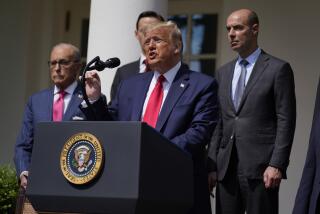Economy in shock: It’s failure overload
Any capitalist nation must be willing to embrace some level of economic Darwinism: the notion that the fittest survive while the less robust fall away.
But what America is living through now is a drastic and high-speed wave of Darwinism that reaches every corner of the economy and financial system.
We’re on failure overload -- which is why this all feels so frightening and why markets remain in disarray.
Case in point: It’s a good thing, ultimately, for sickly banks to be closed and for stronger banks to take their place.
When too many major banks are at risk of failure at the same time, however, the entire financial system is threatened. The fittest might survive systemic failure, but to what end?
Likewise, an economy this size can handle some significant number of companies paring, say, 5% or 10% of their workers in the name of efficiency. But it can’t easily contend with plummeting employment across the private and public sectors.
Of course, for companies teetering on the verge of bankruptcy because sales have collapsed, there may be no alternative but to slash expenses by cutting staff.
Microsoft Corp., however, appears in no danger of failure. The company earned $4.17 billion in its latest quarter, a 25% net profit margin on sales of $16.6 billion. Yet even Microsoft is taking the knife to its payroll, with plans to eliminate up to 5,000 jobs, or 5% of its workforce, over 18 months -- the firm’s first-ever layoffs.
Had they been let go a couple of years ago, those people might have easily found work elsewhere. Now, amid a deepening recession, they’ll join millions of others who face the brutal reality that jobs are extraordinarily scarce.
In California the jobless rate reached 9.3% in December, a 15-year high. And given the dire condition of the Golden State’s economy, it’s a pipe dream to think that the unemployment rate has peaked.
Technology workers, perhaps more than others, understand the concept of “creative destruction.” The term was popularized by the Austrian economist Joseph Schumpeter to describe the forces perpetually at work in a healthy capitalist economy.
The idea is that an economy should be forever renewing itself thanks to innovation, albeit with considerable pain along the way. In other words, new technologies are wondrous -- unless you’re stuck selling technologies made obsolete by a smarter competitor.
Here’s a thought: One reason we’re facing such a large Darwinian wave in the economy may be that the easy money of the last two decades delayed creative destruction that otherwise would have occurred.
As long as credit was more than ample, many businesses and technologies could hang on despite being under heavy attack from more innovative rivals.
Amid the financial-system crisis, credit has evaporated. That’s a death knell for weak businesses, large and small, that were over-leveraged and are struggling with plummeting sales as consumer and corporate spending shrinks.
The relative lack of credit, however, also obstructs the “creative” part of the creative-destruction continuum: Many firms that should be survivors of this debacle can’t get the basic funding they need to carry on and position themselves for an economic upturn, wherever it is on the horizon.
That’s why the Federal Reserve, and the Obama administration, are focusing so intently on trying to reopen the credit spigot.
What they’re up against is that lenders remain saddled with so much bad debt from the boom years that many of them are paralyzed with fear. Every borrower is suspect; it’s easier for a banker to sit on cash than to lend it and risk more losses. What would you do in their shoes?
Goldman Sachs & Co. economists estimated this month that a total of $2.1 trillion in U.S. debt will have to be written off to purge the system of bad credit.
That includes mortgages, other consumer loans, as well as commercial real estate and corporate loans.
Yet banks and investors have recognized just $1 trillion of loan losses so far, Goldman calculated.
So the Obama administration is considering reviving the original idea of the $700-billion bank bailout Congress approved last fall: Have the government take bad loans off banks’ books, freeing them of that dead weight.
But one way or another, the losses from the debt binge will have to be recognized.
That’s lost income or principal to someone -- bank shareholders, bond holders, or the taxpayer.
That is more failure that the economy must digest, when it’s already choking on the first huge lot of it in this recession.
The only solution for this mess is the one most people don’t want to hear: time.
It took 25 years to inflate the U.S. consumer debt bubble. It will take longer than two years to deflate that bubble to a size that no longer threatens the national well-being.
And in the meantime, federal borrowing to support the economy will balloon.
The stock market, off to a lousy start this year after last year’s horrendous losses, may simply be recognizing that there is no quick fix.
The market also may be acknowledging that, although there will surely be survivors of this Darwinian shakeout, identifying them remains a high-risk game.
--
More to Read
Inside the business of entertainment
The Wide Shot brings you news, analysis and insights on everything from streaming wars to production — and what it all means for the future.
You may occasionally receive promotional content from the Los Angeles Times.










